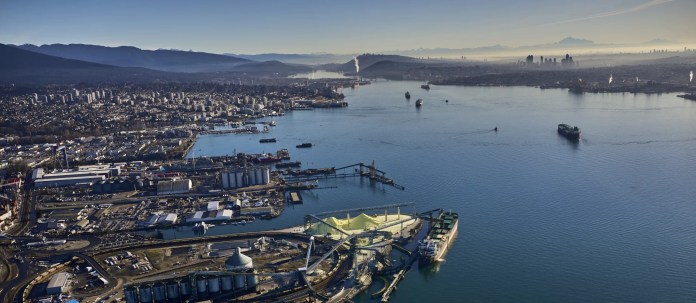Vancouver’s Breakbulk Trade Faces Headwinds
A cooling construction sector has taken the heat out of Vancouver’s breakbulk trade, which slumped in H1 2025 even as the fourth largest port in North America posted record overall volumes.
Non-containerised general cargo declined 15 per cent year-on-year to 6.8 million tonnes, underlining the pressures on a segment central to project and heavy-lift cargo. This downturn raises critical questions: Will a lack of demand for construction materials and heavy equipment stifle not only the port’s profitability but also the regional economy? The Vancouver Fraser Port Authority reports that more than 85 per cent of the port’s breakbulk consists of domestic volumes such as logs, steel, and construction materials (Source: projectcargojournal). With regional building projects slowing, these crucial trade flows have suffered significantly.
Eroding Traditional Breakbulk Flows
“It appears that a fall in breakbulk volumes seen so far this year is mostly related to a slowdown in the local construction sector, including domestic volumes and steel imports,” said port authority spokesman Alex Munro (Source: projectcargojournal). This alarming trend is exacerbated by a decline in foreign breakbulk volumes, which fell 8 per cent to 0.9 million tonnes. The shift of forestry products into container trades intensifies the erosion of traditional breakbulk channels, while tepid demand for steel signals a broader weakening in industrial activity.
Figures for 2024 further highlight these concerns; domestic breakbulk volumes plummeted by 18 per cent to 15.3 million metric tonnes (MMT), and foreign volumes were 1.9 MMT, down two per cent (Source: projectcargojournal). The looming question here is whether this trend will stymie the port’s overall growth or force it to pivot toward more sustainable sources of revenue.
Compounding these issues is the persistent uncertainty surrounding U.S. tariffs. The potential long-term implications could reshape not only port business dynamics but also regional industries reliant on cross-border trade.
‘Not Impacted’ by U.S. Tariffs
“The Port of Vancouver does not typically handle exports of Canadian steel and aluminium to the U.S., and our breakbulk volumes are not impacted by recent U.S. tariffs—this includes some scrap steel sent to the U.S. via containers and breakbulk, which do not appear to be affected,” Munro contended (Source: projectcargojournal). While port authorities maintain a bullish outlook, declaring faith in their operations, the reality on the ground suggests a more complex narrative filled with uncertainties. The port authority reiterates its mandate is to support Canada’s trade through ensuring capacity and leasing federal land to terminal operators.
The overarching future trajectory of Vancouver’s breakbulk business will largely depend on external economic forces. As both bulk and container sectors solidify their positions as dominant growth drivers, where does that leave breakbulk? If construction slows further, will the implications extend beyond the port to affect ancillary businesses and even employment in the region?
The trends seen thus far indicate a precarious balancing act as stakeholders grapple with maintaining operational viability amid uncertain market conditions. As the landscape shifts, stakeholder vigilance becomes imperative. What strategies must the Port of Vancouver adopt to navigate this evolving paradigm, and will they be enough to safeguard its place as a crucial economic conduit for Canadian trade in the face of mounting challenges?
